Taxiway Mike at Sea-Tac Airport is closed during reconstruction of runway 16C/34C – Photo: Lauren Darnielle | AirlineReporter
Last week, I had the opportunity to get a behind-the-scenes look at the construction currently in progress on Runway 16C/34C at Seattle-Tacoma International Airport (SEA, aka Sea-Tac). The center runway closed on May 4th for a complete reconstruction and is scheduled to re-open October 30th, so the project is already well underway.
At 9,426 feet in length, 16C/34C is Sea-Tac’s second-longest runway, consisting of over 4,000 concrete panels, each measuring 20 feet x 18.75 feet. Needless to say, reconstructing a runway is a huge undertaking, so there was plenty to see on our tour!
During construction, it is business as usual on the other two runways and the open taxiways – Photo: Lauren Darnielle | AirlineReporter
Originally built in 1969, 16C/34C is the oldest runway at Sea-Tac. It was designed to last 20 years, so it has more than done its duty. Upon completion of this reconstruction project, all three of Sea-Tac’s runways will have been constructed or rebuilt within the last seven years. 16R/34L (the hotly-contested third runway was built in 2008, and the longest runway, 16L/34R, was reconstructed in 2009.
We continue to grow at a tremendous rate and the reconstruction of Sec-Tac™s center runway is vital to serve the demands of our region with progressive steps to improve safety, efficiency and environmental stewardship, said Mike Ehl, Director, Aviation Operations. œThis will bring all of our runways up to modern standards for reliable use for decades to come.
Not to worry, those holes in the runway won’t stay there. They’re for FAA testing. – Photo: Lauren Darnielle | AirlineReporter
Our tour started at the south end of the baggage claim level, where we all boarded a bus to head out to the runway. Of course, as a bonus, we drove by the A and S gates and I definitely had my camera at the ready to get some photos of the international liveries I don™t often see.
Our first stop was at taxiway Quebec, on the south end of the runway, where we all piled out of the bus to get a closer look. We saw some paving equipment, and listened to our guides give more information about the project, but there wasn™t a lot of action on that end of the runway. Back on the bus!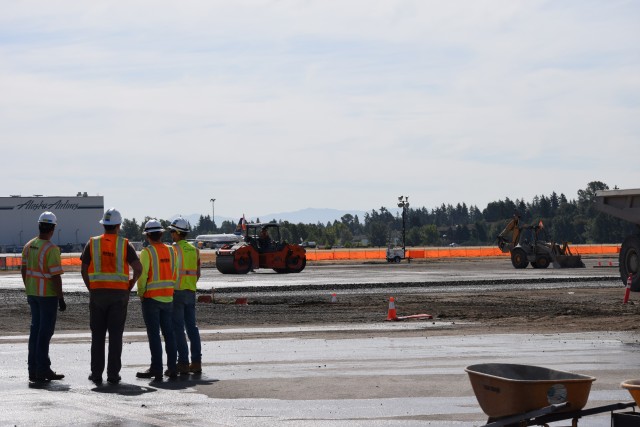
Paving work is progressing at the south end of the runway – Photo: Lauren Darnielle | AirlineReporter
Next stop: about halfway up the runway, between Mike and Kilo. At this stop, we saw the huge piles of material, both concrete and asphalt, that have been excavated from the old runway. Fortunately, this material is not destined for a landfill. Befitting Sea-Tac’s commitment to the environment, the concrete is being recycled and crushed on-site into gravel that is being used as the sub-base for the new runway.
BONUS:For the Birds: Wildlife Management at Seattle-Tacoma International Airport
They anticipate this will be over 300,000 square yards of recycled concrete — wow! The piles Isaw represented about a third of the old runway, as a lot of the excavated material has already been incorporated into the new runway.
Concrete excavated from the old runway, waiting to be recycled – Photo: Lauren Darnielle | AirlineReporter
Similarly, the asphalt from the existing shoulders and blast pads is being taken to asphalt plants for recycling. The new asphalt will have approximately 20% recycled content. Steel and other metal components are also being separated out for recycling.
Asphalt excavated from the old runway – Photo: Lauren Darnielle | AirlineReporter
Our next stop was, in my opinion, the most interesting. Continuing north along the runway to Echo, the northern portion was in a later stage of construction. But it wasn™t uniform across the width of the runway, so we could see the different layers. It was like runway archaeology “ very cool!
The reconstructed runway will consist of eight inches of crushed rock sub-base, four inches of asphalt, and 18 inches of cement concrete. It is designed to have a useful life of 40 years, so it will be a long time before anyone has another look at what is beneath the surface.
At the north end of the runway, supports are being placed in preparation for pouring another concrete panel – Photo: Lauren Darnielle | AirlineReporter
Although we didn™t directly see it at this stage of construction, the project will also include installation of a new LED runway lighting system and an automated electronic Foreign Object Debris (FOD) detection system to provide increased safety. Sea-Tac will be one of only a handful of airports worldwide, and only the second in the U.S., to have such an advanced FOD system.
An Alaska Airlines 737-800 crosses 16C/34C, while a concrete pouring machine is in place, ready for the next panel – Photo: Lauren Darnielle | AirlineReporter
We concluded theformal part of the tour, but no one really wanted to go home and instead wanted tohang out on the runway on a beautiful summer day, so we got two bonus stops! The first was purely for plane spotting. Some other folks had requested an opportunity to get photos of planes crossing 16C/34C on one of the taxiways that are currently open during construction.
I sure wasn™t going to argue with that plan. Flights were landing on 34L, turning around, taxiing south beside us on Tango, and then turning on Juliet to cross directly in front of us, so that was a lot of fun to watch. Definitely the closest I™ve gotten to an active taxiway (when not on a plane, that is).
The retaining wall at the south end of 16R/34L – Photo: Lauren Darnielle |AirlineReporter
Once everyone had gotten their fill of crossing traffic, we took the scenic route back to the terminal for one more stop on the way. We took the perimeter road behind the third runway (16R/34L) to see the impressive retaining wall that was built in 2008, along with the runway. At the time it was built, it was among the top 10 tallest mechanically-stabilized-earth (MSE) walls in the world.
This stop also allowed us to see (on the other side of the perimeter road) the area where the concrete from the old runway is being crushed into gravel for the new runway.
Concrete is being recycled on site to form the sub-base of the new runway – Photo: Lauren Darnielle | AirlineReporter
Driving back on the ramp parallel to 16L/34R, we got the grand tour of the rest of the gates and had a good view of the flights departing 34R. We also had an up-close look at the planes taxiing right beside us.
A Southwest 737-800, in new heart livery, takes off from 34R – Photo: Lauren Darnielle | AirlineReporter
I really enjoyed my runway tour, and the bonus fun of a unique plane spotting perspective. Once the center runway reopens, every time I take off from it, I will think about how much work went into the reconstruction and what it looked like half-finished.
And being the native Seattleite tree-hugger that I am, I can rest easy knowing ow much recycled material was used in the process.
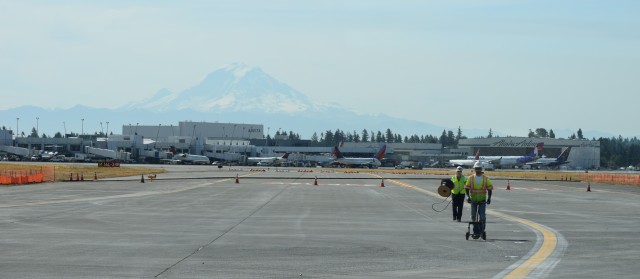
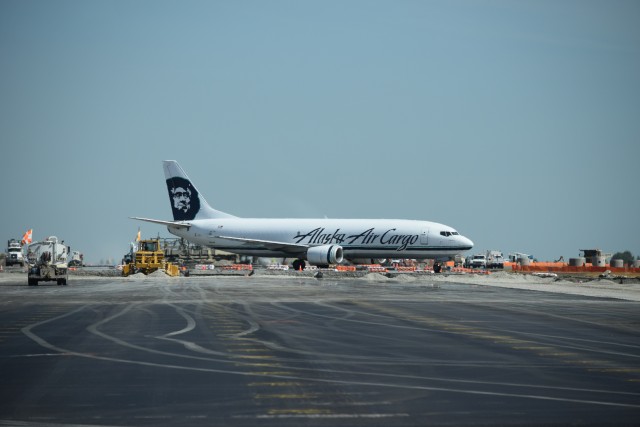
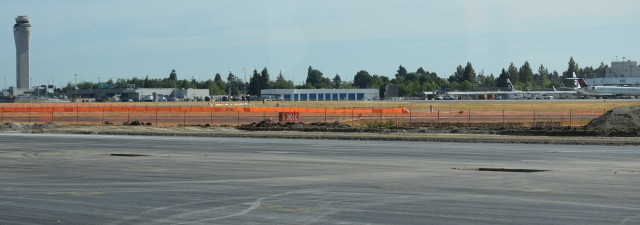
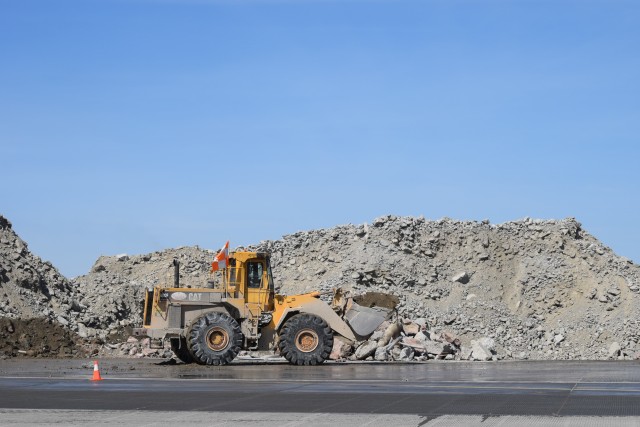
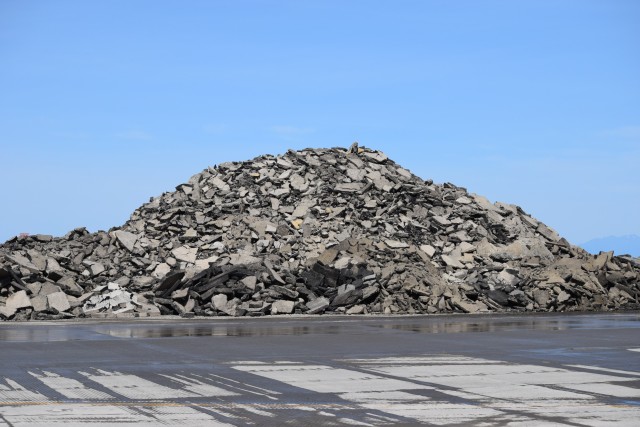
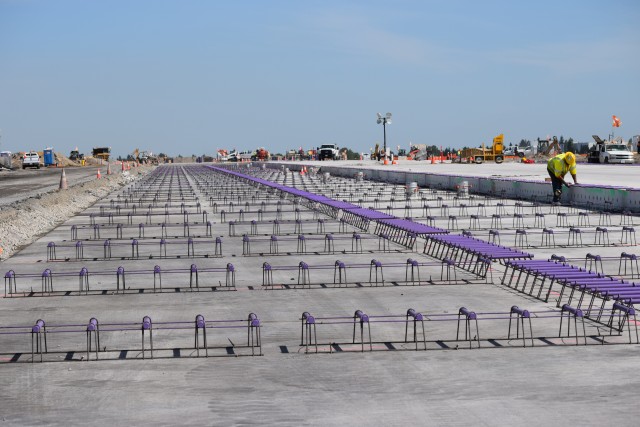
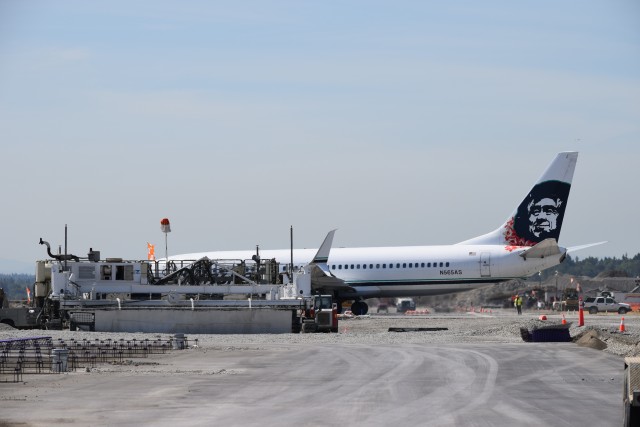
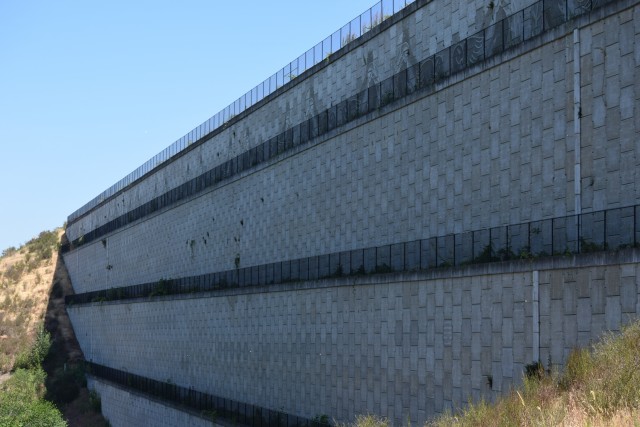
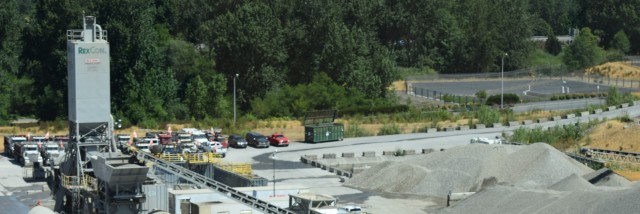
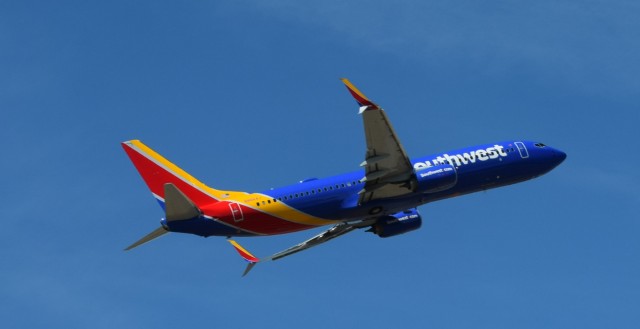
PLANE-CRAZY JOE
JULY 20, 2015
Lauren, if memory serves, the Center runway had a major ” rehab ” shortly after the Third Runway went into service. 16C / 34C was closed for quite a while, as I recall. One would think that all required upgrades were done then!
LAUREN DARNIELLE
JULY 20, 2015
In the press release, they mentioned that over the years, 600+ of the 4000+ concrete panels on 16C/34C have been replaced. So they definitely did some patch work to keep it operating. I guess after all these years, it’s just due for a complete reconstruction.
COOK
JULY 20, 2015
Thanks Lauren; one impressive report and excellent pix. Knowing absolutely Nothing about road or RWY construction, I’m surprised to learn that the hefty asphalt layer is placed UNDER the 18″ of reinforced concrete. Who wudda thunk it? And if anyone likes to date commenters as young, old or ancient, I’m old enough to have flown to/from SEA-TAC when it has ONE runway and the terminal was one, rather small building. There were no air-bridges, stairs were pushed by had or mounted on modified pick up trucks and even the “Big” DC-6/7s approached the terminal and parked in a wide loop. Departing taxi instructions were passed to the captain’s side window attached to a long stick and granny always had a left window seat so she could waive a color-coded hankie from her window. In those days, the observation deck was already a popular spot and without the clutter of today’s busy airport, one could see almost everything. When I eventually made my own virgin flight (headed for Disneyland) the captain ordered me to push a small red button on the overhead panel that I could hardly reach. “Push it THREE TIMES he ordered. It honked the horn and apparently sent some important message to the ground crew. Ah, I think Sea-Tac has changed just a bit. Thanks again for the great report.
-Cook
LAUREN DARNIELLE
JULY 30, 2015
Glad you enjoyed it! I thought the exact same thing about the asphalt layer, but we definitely saw the paving happening over the gravel sub-layer.
APRIL 23, 2016
hi Lauren. I have this project about airport runways. this was very very helpful.
the only problem I have is with the 7th picture. I don’t know what’s that purple thing? what’s it’s name? what does it do?
It’ll be amazing if you could even point me in the right direction
Link To Original Content
Functional Always active
Preferences
Statistics
Marketing